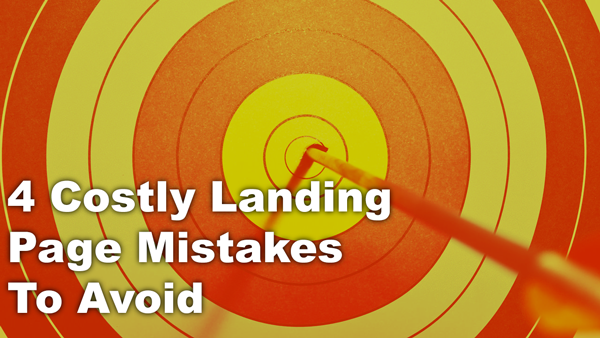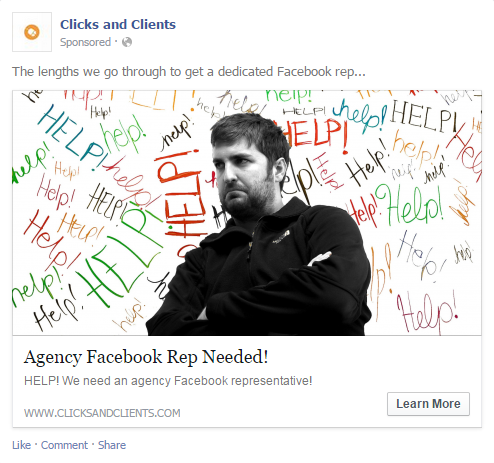
4 Costly Landing Page Mistakes to Avoid

When it comes to digital marketing, first impressions are more important than ever. The sheer amount of choices that people have access to means that getting and keeping your audience’s attention is a vital skill in and of itself. Studies vary on the exact amount of time, but the fact of the matter is that your landing page (the page that a visitor first sees when they arrive on your site) only has a few seconds to draw the user in.
So, avoid these common landing page mistakes and increase your odds of making a sale.
1. Trying to please everyone
This is a mistake that seems to defy common sense. If you’re selling a product or service, don’t you want to please everyone? Don’t you want to increase your chances of connecting with the right person and making a sale?
The answer is: not necessarily.
And I think this is especially true for small businesses. Walmart and Amazon can get away with trying to sell everything to everyone, but if you don’t have millions of dollars to spend on Super Bowl ads, they you have to think a bit more strategically.
You have to zero in on your ideal customer and make your offer as appealing to them as possible. Don’t try to please everyone all at once. A better strategy is setting up multiple landing pages to target different markets.
Take Campaign Monitor, for example. Their email marketing software can be used by a variety of businesses, but they also have two specialized landing pages set up for specific audiences: retail stores and agencies.
2. Committing marketing incest
Marketing incest is when you set up a landing page that’s almost an exact copy of your competitor’s page. We actually see this quite a lot here at Clicks. Usually, it’s an up-and-coming business trying to copy an established market leader, and it almost never works out.
Why? Because, who cares?
Seriously. If your offer is interchangeable with everyone else’s, then why should people care? When you copy someone’s landing page, you put the burden on your audience to justify why they should purchase from you instead of all the other options.
Obviously, there are landing page templates and certain basic design principles that are ubiquitous on the web, but you need to make sure any page you’re sending traffic to makes the case for your unique company.
3. Leaving a gap between your ads and your page
First and foremost, your landing page needs to fulfil the promise that’s in the ad you used to drive traffic to it. This means if you’re advertising a President’s Day sale, then the first thing people should see when they land on your page is something that affirms that “yes, you’ve made it to the right place”.
More often than not, this means including the ad headline in a prominent spot on your landing page. Again, this is all about reducing friction and minimizing the amount of work customers have to do in order to buy from you.
4. Not testing
Yes, there are a multitude of mistakes you could be making with your landing pages, but you’ll never know for sure until you test them.
These days, the options for performing conversion rate optimization (CRO) are as varied and detailed as those for targeting Facebook ads. This article has covered some of the more common mistakes companies make, but the truth is, there’s no way to know what works for your specific audience without testing first.
This isn’t just simple A/B tests on different backgrounds (although that can work surprisingly well). You can test the effectiveness of sending traffic from different sources to different pages, segment your audience by the time of day they visit your site, or even dynamically produce different pages based on the user’s location.
If you’re sending paid traffic to your site, we highly recommend you couple that with some CRO testing to ensure that you aren’t letting any conversions slip through your fingers. Get started today with our simple, 3-step conversion optimization strategy.
Tags In
Paul Rakovich
Browse All PostsTell Us Your Goals
Recent Posts
- Google PMax: Get the Most Out of Your Ad Campaigns While Combating Fraud
- Lead Ads Don’t Have to Suck: How to Leverage Them Correctly
- Why More Expensive PPC Ads are Almost Always Worth It
- Unlock the Secrets of Organic CPA: The Ultimate Guide to Cost Per Acquisition
- Secrets We’ve Learned from Years Working with Paid Account Reps at Meta, TikTok, LinkedIn and Google


